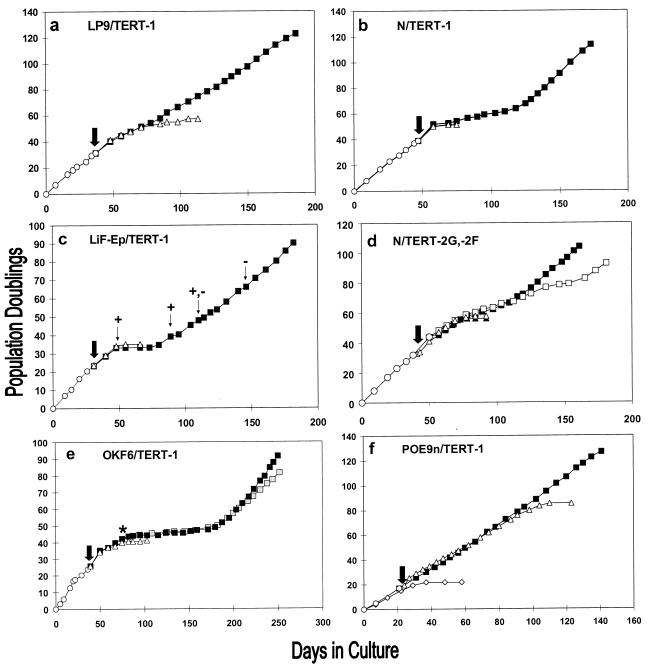FIG. 2.
Long-term replication characteristics of control and hTERT-expressing cell lines. Early- to mid-life-span cultures of LP9 (a), N (b and d), LiF-Ep (c), OKF6 (e), and POE9n (f) were transduced with control or hTERT expression vectors (time of transduction indicated by large arrow), were drug selected, and then were serially passaged. Graphs show passage history of the parent cell line before transduction (○), of control vector transductants (▵), and of hTERT transductants (■). The label in each panel is the name of the immortal cell line that resulted from that hTERT transduction. In panel c, +, +,−, and − indicate the appearance of p53-negative cells in the LiF-Ep/TERT-1 population during serial passage, as described in the text (+, 100 of 100 colonies examined were p53-positive; +,−, 51 of 100 colonies examined were p53 positive and 49 of 100 were p53 negative; −, 99 of 100 colonies examined were p53 negative). In panel d, after transduction with control or hTERT vector, half of each drug-selected population was serially passaged in K-sfm (▴, N/BABE-2G; ■, N/TERT-2G) and half was serially passaged in the feeder cell-FAD system (▵, N/BABE-2F; □, N/TERT-2F). In panel e, some OKF6/TERT-1 cells cryopreserved at the onset of SGP (indicated by *) were thawed and the serial passage was repeated (□), yielding another RDI line designated OKF6/TERT-1R. Panel f includes the replication history of POE-19, a line of apparently normal oral keratinocytes cultured from the same donor as POE9n. The short life span (∼20 PD) of POE-19 indicates that the long (∼85-PD) life span of POE9n and POE9n/BABE is abnormally extended, as discussed in the text.

